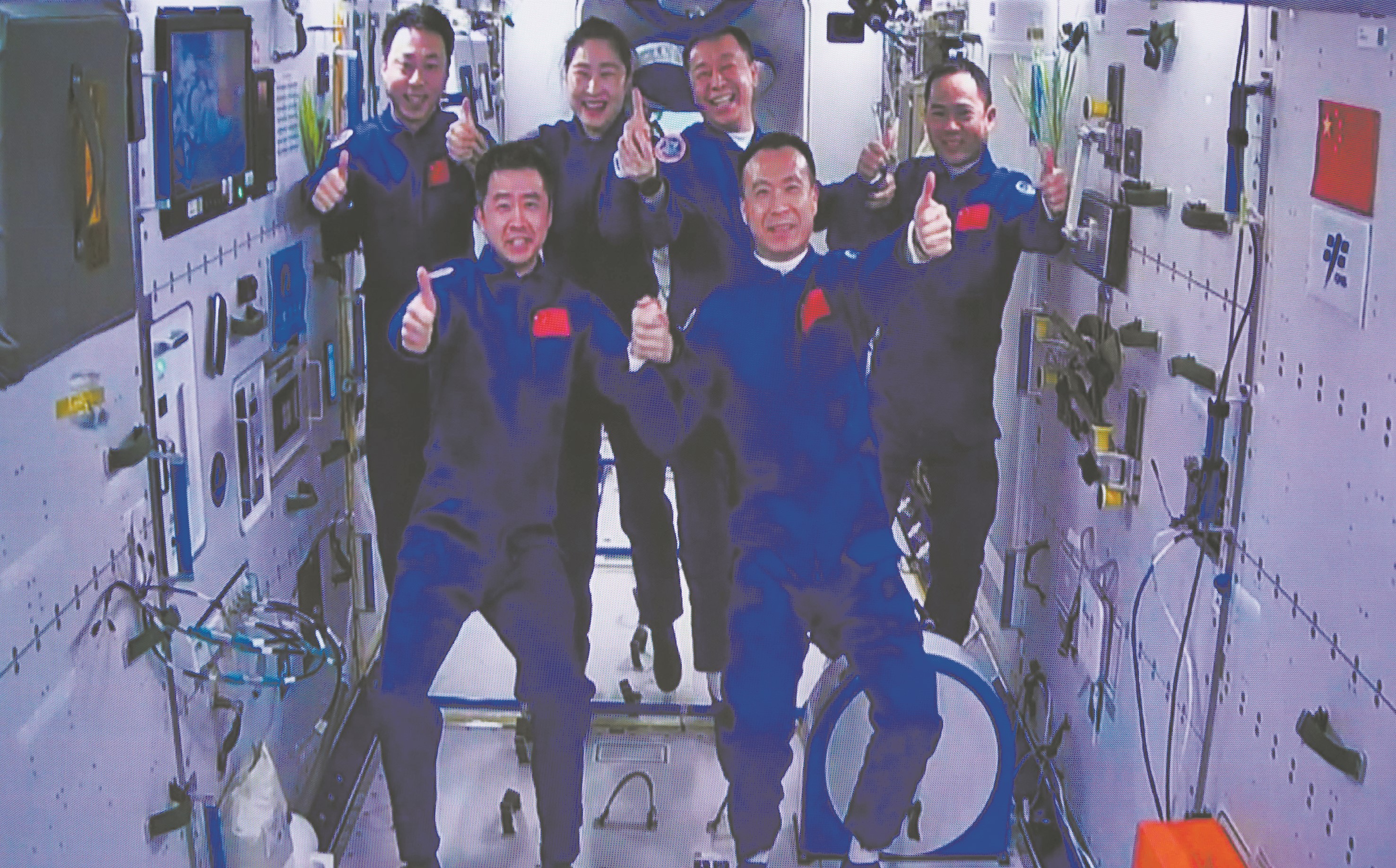
China's Shenzhou-15 crew enter the country's space station and meet with another astronaut trio on November 30, adding the manpower at the in-orbit space lab to six for the first time. (PHOTO: XINHUA)
By?Staff?Reporters
The Shenzhou-15 manned spaceship was launched on November 29, and is expected to wrap up the last stage of the space station construction and launch the first stage of its application and development, according to the China Manned Space Agency (CMSA).
Shenzhou-15 crew members Fei Junlong, Deng Qingming and Zhang Lu entered the space station and met with the Shenzhou-14 crew on November 30, a historic gathering that increased personnel at the in-orbit space lab to six for the first time.
It takes about five days for the six astronauts to complete the first in-orbit crew rotation in China’s space station. The Shenzhou-15 crew will stay in orbit for six months, and they will conduct three to four extravehicular activities (EVAs) and install the Mengtian lab module extended pump sets and exposure payload platform.
Apart from the regular maintenance of the space station, the Shenzhou-15 crew will also carry out more than 40 experiments and tests in the fields of space science, space medicine and space technology.
After the Shenzhou-15 manned spaceship successfully docked with Tianhe module, the space station combination has expanded to its largest configuration with three modules and three spaceships, having a total mass of nearly 100 tons.
During their stay in orbit, the Shenzhou-15 crew will also see the arrival of the Tianzhou-6 cargo craft and Shenzhou-16 manned spaceship. They are projected to return to Earth in May 2023.
The trio will conduct a series of experiments in fields such as life science, fluid physics, combustion science and materials science. Notably, this is the first time that fruit flies have been taken on a Chinese space mission as experimental subjects. What made scientists choose fruit flies? What experiment will they undergo?
